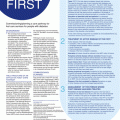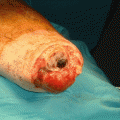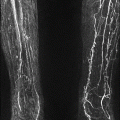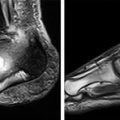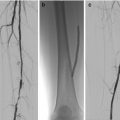Figure 15.1
Pressure reduction by commonly used off-loading footwear (Modified from Cavanagh and Bus [1])
Efficiency of footwear in off-loading correlates directly with ulcer healing rates and the duration to ulcer healing. A recent metaanalysis confirmed TCC healing rates of 79.3–95 % (with the exception of one study with healing rates of 68 %) at ≥12 weeks [2]. By contrast a bi-valved TCC will heal less than 30 % of ulcers in a similar time period. Forefoot off-loading shoes and half shoes have moderate efficacy and will heal around 60 % of neuropathic forefoot ulcers, although time to healing is prolonged when compared to the TCC. Standard therapeutic shoes (used most commonly in many clinics) have poor efficacy, healing less than 25 % of ulcers with a mean time to healing of greater than 60 days [2].
This data suggests that the off-loading strategies employed in the majority of patients, certainly within the authors unit, are less effective than available alternatives. Both the National Institute for Health and Care Excellence (NICE) and the International Working Group on the Diabetic Foot (IWGDF) recommend use of TCC for neuropathic foot ulcers [3, 4]. However, this is contraindicated in patients with infection and significant ischaemia and therefore 76 % of patients enrolled into the Eurodiale study would be ineligible for this treatment modality [5]. Application of TCC requires skilled technicians to minimise the risk of ulceration from ill-fitting casts, and can take up to 60 min fitting time, which would overwhelm many diabetic limb-salvage clinics. These reasons may explain why TCC is only use routinely for neuropathic ulceration in 2 % of US centres [6].
A second anomaly is the difference in performance between the TCC and bi-valved TCC. A previous study has shown that patients wear their off-loading device for only 29 % of steps per day, despite believing that they are being highly compliant [7]. They tend to wear the device out of the house, but wear normal footwear or slippers in the house. Conversion of a removable walker to a non-removable device (the instant TCC, iTCC), usually by use of a cohesive bandage, can greatly reduce the application time whilst achieving similar healing rates to the TCC.
The issue remains that persuading patients to agree to non-removable devices, particularly if this affects the ability to work or drive, can be difficult. Our unit has occasionally had to resort to treatment contracts, or threats to discharge from care, for non-compliant patients with deteriorating ulcers despite best removable off-loading, who refuse TCCs. Off-loading is a balance between acceptability of the footwear, to maximise compliance, versus the effectiveness of that footwear in ulcer healing. Because of this, we continue to use a policy of simple off-loading footwear or forefoot off-loaders as a primary modality, with scotch cast boots used as second-line, reserving walkers or TCC for the most complex or resistant cases. Future work should be directed towards novel technologies to allow more effective off-loading in footwear acceptable to patients, and to monitor compliance.
Surgical Off-Loading
The most important surgical consideration is the impact of minor amputations on future risk of ulceration. In a follow-up study of patients subjected to hallux or first ray amputation, 60 % had one further amputation, 21 % two further amputations and 7 % three further amputations [8], leading to some suggesting that those requiring a first ray amputation should have a primary trans-metatarsal amputation. The role of percutaneous Achilles tendon lengthening as an adjunct to trans-metatarsal amputation has already been discussed.
A number of surgical strategies to off-load specific diabetic foot abnormalities have been described. These can be useful in specific circumstances but infection rates in patients with neuropathy undergoing curative corrective procedures for ulceration is approximately 20 %.
Digital Ulcers
Flexible claw-toe deformities of the hallux or lesser toes with associated apical ulcers can be treated by flexor tenotomy, with healing rates in excess of 95 % reported in the literature. Similarly, dorsal interphalangeal (IP) joint ulcers in a flexible clawed toe can be treated with extensor tenotomy, again with excellent healing rates [9].
Arthroplasty of the hallux or lesser toes can be performed to correct deformities. More commonly, the hallux ulceration is related to reduction in movement of the first MTP joint, in which case a Keller-type arthroplasty is more appropriate, but can be associated with high peri-operative infection rates in this setting.
Stay updated, free articles. Join our Telegram channel

Full access? Get Clinical Tree


